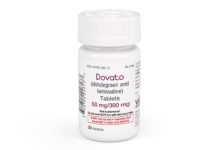The latest progress report from UNAIDS shows significant strides towards achieving the 90-90-90 targets, with 70% of people living with HIV now aware of their HIV status. Of those who know their status 77% were accessing treatment, and 82% of those accessing treatment were virally suppressed.
East and Southern Africa, Western and Central Europe, North America, and Latin America are all on track to reach the 90-90-90 targets by 2020. Seven countries, across three continents have already achieved the targets – Botswana, Cambodia, Denmark, Iceland, Singapore, Sweden and the UK.
UNAIDS Executive Director Michel Sidibé said health outcomes are improving as nations become stronger at bringing the HIV epidemic under control. “We met the 2015 target of 15 million people on treatment and we are on track to double that number to 30 million and meet the 2020 target,” he said.
The region showing the most progress is East and Southern Africa, which has historically been the area most affected by HIV and is home to over half of all people living with HIV. Since 2010, AIDS-related deaths have declined by 42% and new HIV infections have declined by 29%. This includes a 56% drop in new HIV infections among children.
Overall in East and Southern Africa, 76% of people living with HIV know their status, 79% have access to treatment, and 83% have undetectable levels of HIV.
As a result of this progress, life expectancy has increased by nearly 10 years in the region between 2006 and 2016.
However, progress towards the 90-90-90 targets has been inadequate in the Middle East and North Africa and Eastern Europe and Central Asia.
Alarmingly, AIDS-related deaths have risen in these two regions by 48% and 38% respectively. Across Eastern Europe and Central Asia only 28% of people living with HIV have access to antiretroviral treatment, even though two thirds of people know their status.
Young people, who are at particular risk of HIV, are also falling behind – on knowledge of HIV, on HIV testing, and on treatment and prevention. Young women are especially at risk, with 59% of new infections among young people aged 15-24 occurring among this group.
One of the most worrying findings of the report is that while new HIV infections are falling, they are not declining significantly enough to meet global targets.
New infections fell by 16% to 1.8 million between 2010 and 2016. The report suggests this may partly be the result of preventative effects of antiretroviral treatment scale-up at the population level. However, in Eastern Europe and Central Asia, significant increases in new HIV infections have been reported.
The mixed progress comes amid flat-lined resourcing for the AIDS response. An estimated $26 billion is needed for the global response by 2020, but at the end of 2016 only $19 billion was available.
“We are maximising the use of every dollar of available, but we are still $7 billion short,” said Sidibé. “With more international assistance, increased domestic funding, innovative financing and effective programming can end the AIDS epidemic by 2030.”


 ПОИСК ПО САЙТУ
ПОИСК ПО САЙТУ  поиск по ресурсному центру
поиск по ресурсному центру 



